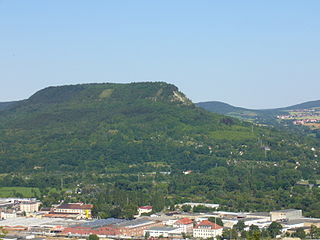 W
WAltyndepe is a Bronze Age (BMAC) site in Turkmenistan, near Aşgabat, inhabited first from c. 3200 to 2400 BCE in Late Regionalization Era, and next from c.2400 to 2000 BCE in the Integration Era as a full urban site.
 W
WBassetki is a small village in Iraq, in Dohuk Governorate of autonomous Kurdistan Region. The village is associated with several archaeological finds.
 W
WFuntana Coberta is a holy pit in Sarrabus-Gerrei, a traditional subregion of Sardinia, Italy. Dating to c. 1200–850 BC, it is included in the territory of Ballao, in the province of Cagliari. It was excavated in 1918 by Antonio Taramelli, and again in 1994 by Maria Rosaria Manunza.
 W
WThe Goloring is an ancient earthworks monument located near Koblenz, Germany. It was created in the Bronze Age era, which dates back to the Urnfield culture. During this time a widespread solar cult is believed to have existed in Central Europe.
 W
WThe Gölpınar Dam, also known as the Alacahöyük Dam, is a Hittite dam from the second millennium BC, near Alaca Höyük in central Turkey.
 W
WHarappa is an archaeological site in Punjab, Pakistan, about 24 km (15 mi) west of Sahiwal. The site takes its name from a modern village located near the former course of the Ravi River which now runs 8 km (5.0 mi) to the north. The current village of Harappa is less than 1 km (0.62 mi) from the ancient site. Although modern Harappa has a legacy railway station from the British Raj period, it is a small crossroads town of 15,000 people today.
 W
WThe Jenzig is a distinctive Muschelkalk mountain in Jena, Germany.
 W
WKalapodi is a modern Greek village in the Lokroi municipality, Phthiotis, Central Greece. Lokroi straddles the pass leading over the low mountains between the Bay of Atalantis in the Gulf of Euboea to the plains of Boeotia north of Lake Copais. The road is often termed the Atalanti-Livadeia. The community of Atalanti, the chief deme of Lokroi, overlooks the Bay of Atalantis, while Livadeia is the current capital of Voiotia.
 W
WKonar Sandal is a Bronze Age archaeological site, situated just south of Jiroft, Kermān Province, Iran.
 W
WThe Măgura Uroiului site is a Romanian multi-period archaeological site located on and around Uroi Hill, a 300 metres (984 ft) tall rock outcrop, with an escarpment facing the Mureş and Strei rivers and sloping on the back side. At the base on the escarpment are a series of plateaus. The site is located about 2 kilometres (1 mi) north of Simeria. 45°51′40″N 23°2′37″E
 W
WNumeira is an archaeological site in Jordan near the southern Dead Sea. The site has substantial Early Bronze Age remains.
 W
WRoca is an archaeological site located on the Adriatic coast of Apulia in Southern Italy, a few kilometres from the modern town of Melendugno and close to the city of Lecce. The site, which has been explored since the end of the 1980s by a team of the University of Salento, has produced some of the best-preserved monumental architecture of the Bronze Age in Southern Italy, along with the largest set of Mycenaean pottery ever recovered west of mainland Greece.
 W
WSømarkedyssen is a neolithic megalithic tomb located near Sømarke on the Danish island of Møn
 W
WThe Tall Zira'a is an archaeological tell in Jordan. Surveys and geophysical investigations showed the site's great potential for excavations.
 W
WTell Abu al-Kharaz is a Bronze and Iron Age archaeological site in Gilead in the eastern Jordan Valley.
 W
WThe Tulul adh-Dhahab, Jordan, are two adjacent tells in the Zarqa River valley, an affluent of the Jordan Valley about an hour's drive northwest of Jordan's capital city Amman. The western of the twin hills, known as Tell edh-Dhahab el-Gharbi, was populated at least from Bronze Age to Late Antiquity, and a beginning of settlement in the Neolithic period is also possible. After the collapse of the ancient buildings probably by an earthquake in Late Antiquity, there was no subsequent settlement on the site. Because of the unfortunate name there have been extensive recent disruptions.
 W
WThe Xiaohe Cemetery, literally "Little River Cemetery" and also known as Ördek’s Necropolis, is a Bronze Age site located near Lop Nur, in Xinjiang, Western China. It contains about 330 tombs, about 160 of which were looted by grave robbers before archaeological research could be carried out.